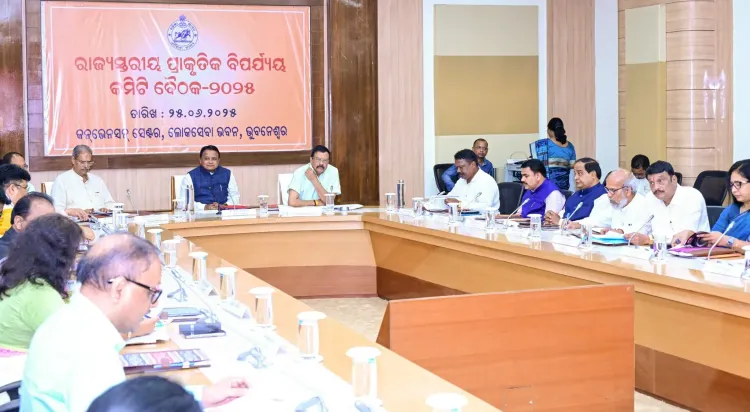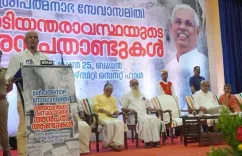How is Odisha CM Committed to Zero Casualty in Disasters?

Synopsis
Key Takeaways
- Odisha's commitment to zero casualties is a priority.
- Preparedness and timely interventions save lives.
- Advanced warning systems are essential for disaster management.
- State compensation for farmers affected by crop loss.
- Emergency control rooms provide 24/7 alerts.
Bhubaneswar, June 25 (NationPress) Emphasizing the state's steadfast dedication to disaster resilience, Odisha Chief Minister Mohan Charan Majhi stated on Tuesday that there would be no compromise in achieving zero casualties during natural disasters, concerning both human lives and livestock.
Presiding over the State-Level Natural Disaster Committee Meeting 2025 at the Lok Seva Bhawan Convention Centre, the Chief Minister remarked, “Odisha is a disaster-prone state, yet our preparedness and timely interventions have preserved countless lives in the past. Our objective remains unchanged – zero casualties, and we stand in solidarity with the people of Odisha in all circumstances.”
He noted that from June to October, Odisha faces heavy rainfall and flooding due to the southwest monsoon, which often results in recurring damage to lives and property. He stressed that while natural disasters are unavoidable, loss and damage can be substantially mitigated through robust preparedness, inter-departmental coordination, and innovative disaster management techniques.
“The Bay of Bengal is the world’s most cyclone-prone region, and Odisha lies directly in the path of many landfalls,” Majhi said. He highlighted the state’s recent achievements in managing Cyclone Dana, which impacted 14 districts but was handled efficiently with zero casualties.
The CM also discussed the 2024 floods in Malkangiri, Balasore, and Mayurbhanj, explaining how swift relief, rehabilitation, and restoration efforts were executed. The government compensated farmers for crop losses attributed to unseasonal rains, which were declared a state-specific disaster.
“Last summer, only one heatwave-related fatality was reported in Balangir, and prompt compensation was provided. This exemplifies our effective heatwave management,” the CM added.
The CM unveiled a significant irrigation initiative: to bring 1.5 million hectares of agricultural land under irrigation in the next five years to combat impending drought conditions.
Emphasizing public health during disasters, he instructed that all tube wells be disinfected; sufficient stocks of medicines and anti-snake venom be maintained in health centers; and rescue teams, including ODRAF, NDRF, and Fire Services, remain prepared.
“We will not compromise on our Zero Casualty policy — not even for livestock,” Majhi insisted, advocating for advanced warning systems, rapid resource mobilization, and effective communication during emergencies.
Revenue and Disaster Management Minister Suresh Pujari underscored the necessity for trained personnel and modern equipment, announcing that Doppler radars would be erected in Sambalpur, Balasore, and Bhubaneswar for enhanced weather monitoring.
The state has already established 909 multi-purpose cyclone/flood shelters in 25 vulnerable districts and conducted mass palm plantation initiatives to reduce lightning-related fatalities.
Emergency control rooms have been activated at the district level, providing 24x7 disaster alerts and assistance.
The meeting included attendance from Deputy Chief Minister Kanak Vardhan Singh Deo, Ministers Nityananda Gond, Mukesh Mahaling, Prithviraj Harichandan, Rabi Narayan Nayak, Krushna Chandra Mahapatra, among others.
MPs and MLAs, including Pratap Sarangi, Satyagiri Ulaka, Ramakant Bhoi, Akash Das Nayak, Anita Subhadarshini, Saroj Pradhan, and several others offered their suggestions and concerns.







